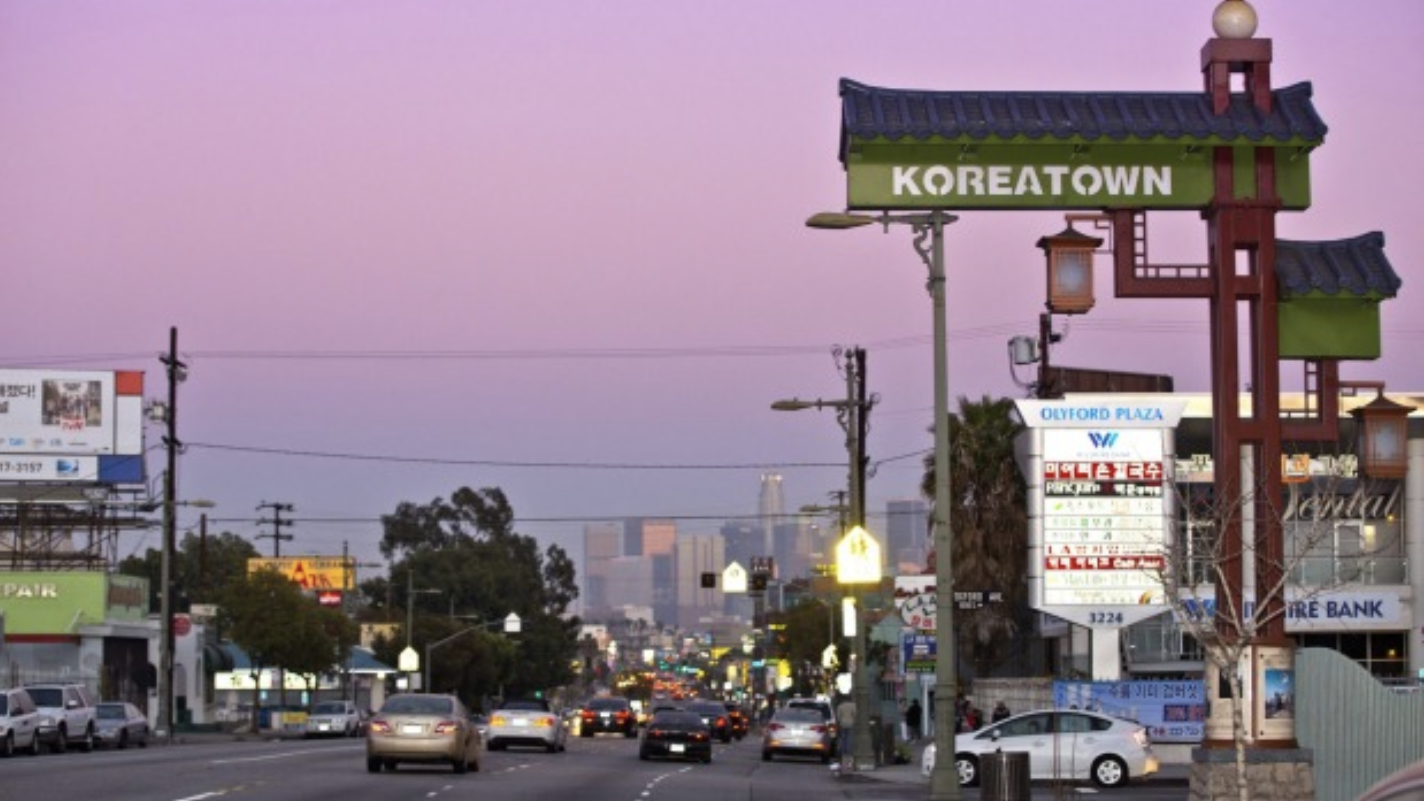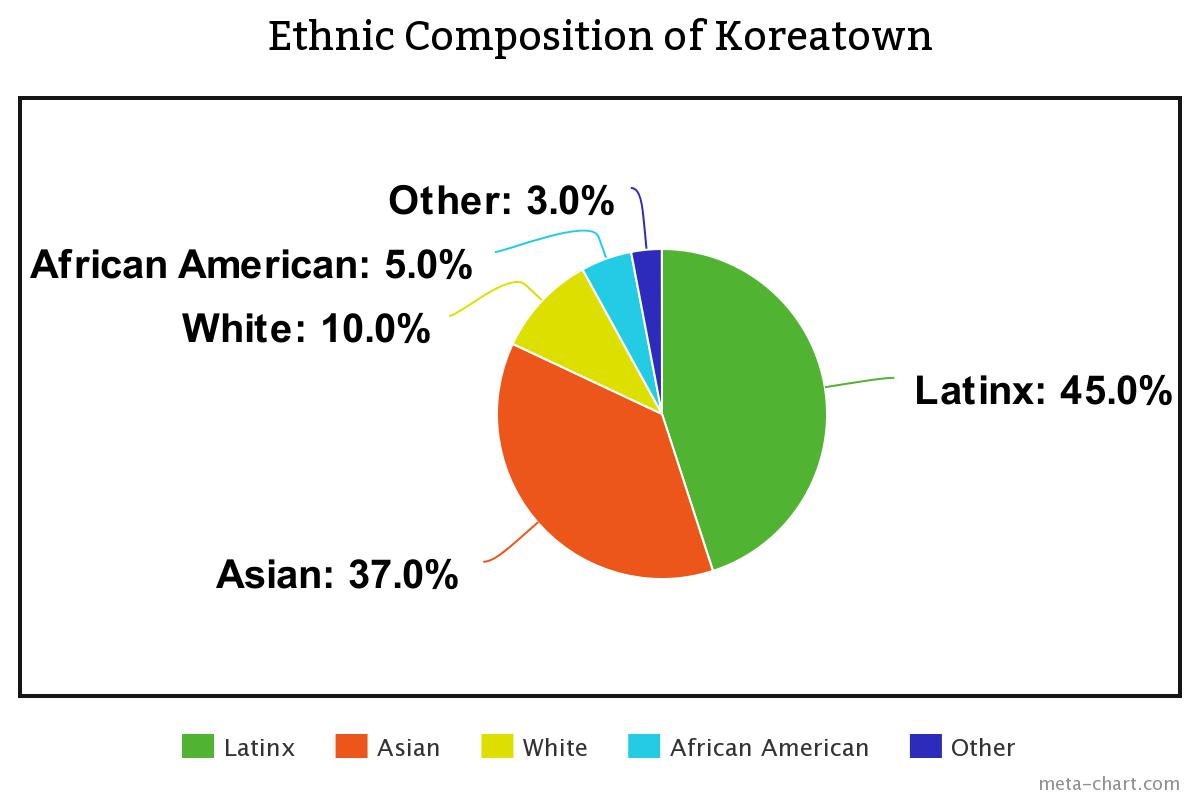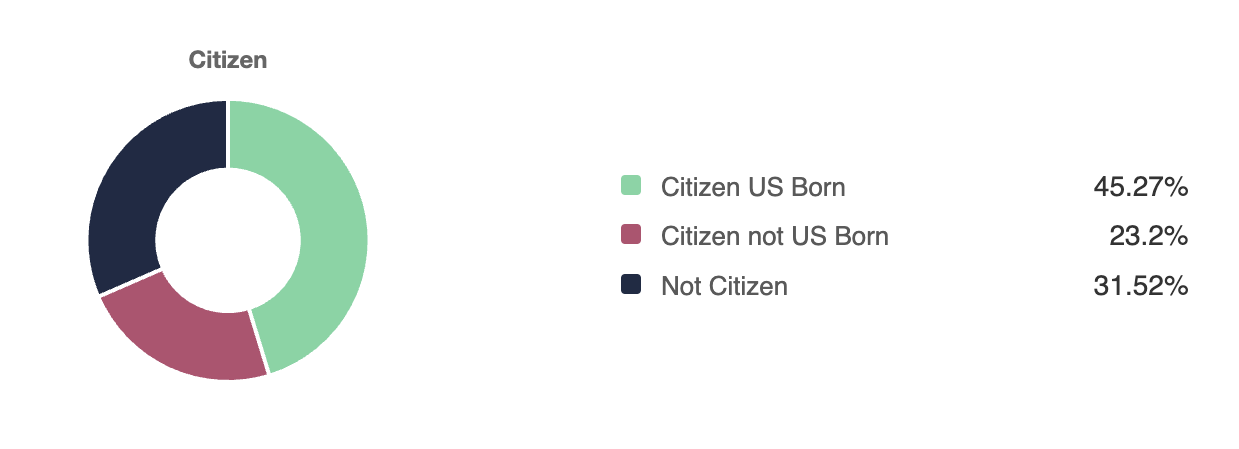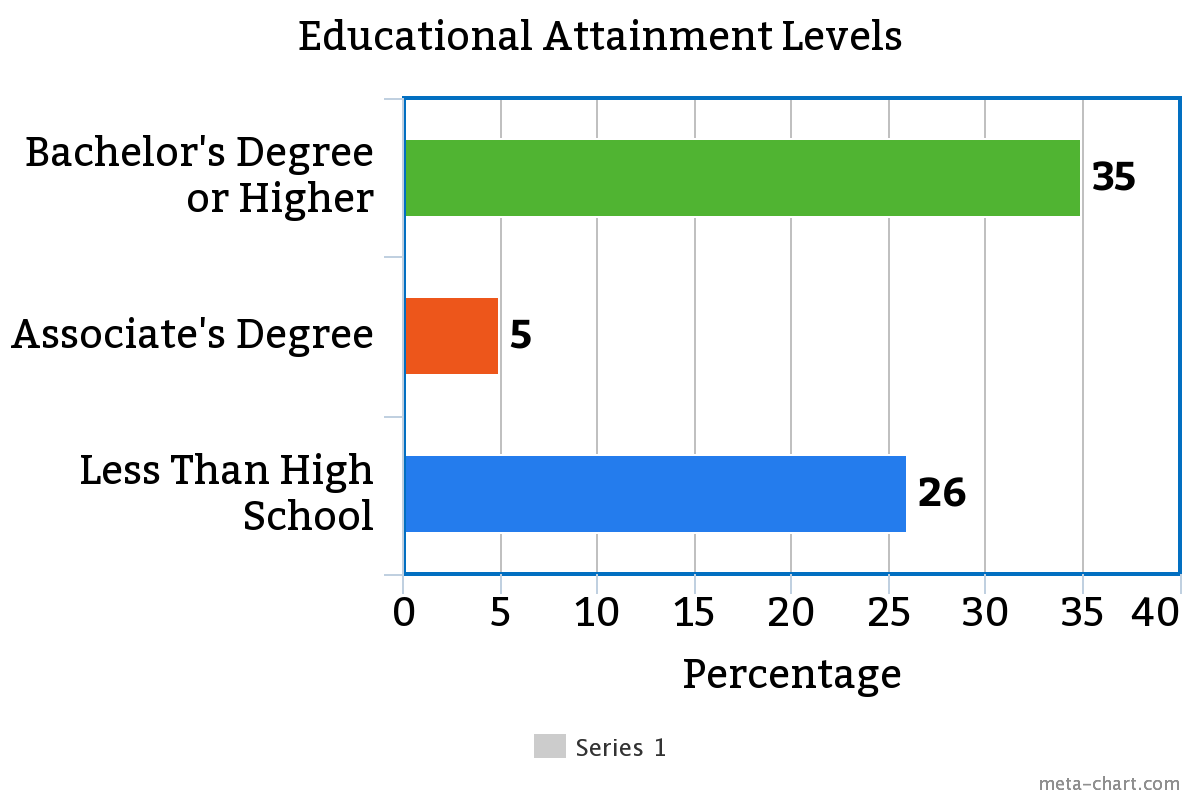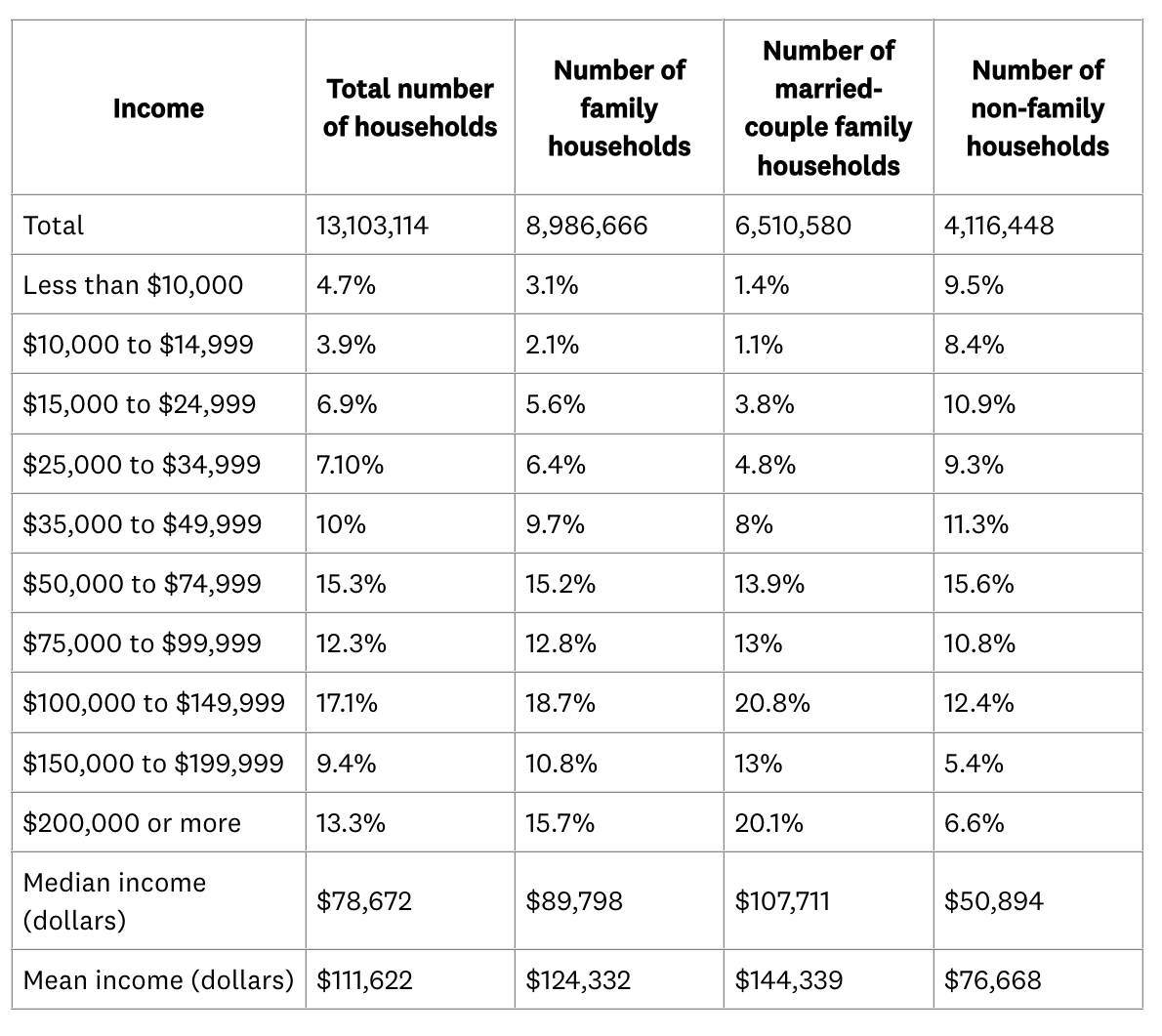Life in Koreatown
The Robert F. Kennedy Community Schools are located in Koreatown, which is a neighborhood in Los Angeles with a population of about 102,000 people.
 Image Courtesy of Neighborhood Data for Social Change (NDSC)
Image Courtesy of Neighborhood Data for Social Change (NDSC)
Koreatown was established in 1904, when the first Koreans came to the United States as farmers and railway workers. Following the Immigration Act of 1965, which abolished quotas on immigrants from certain countries, Koreatown grew rapidly. Businesses, homes, and churches were built. Koreatown was officially established as a Los Angeles neighborhood in 1980. Today, it is an entertainment epicenter and a symbol of multicultural power.
Demographics
Contrary to its name, Koreatown is largely a Latinx community. Asian-Americans account for the second largest ethnic background, followed by Whites and African-Americans.
The majority of Koreatown residents are U.S. born citizens.
Roughly a third of Koreatowners have a bachelor's degree or higher.
Very few residents own houses. Roughly 60% of the population lives with a "rent burden"- more than 30% of their income goes towards paying rent and utilities.
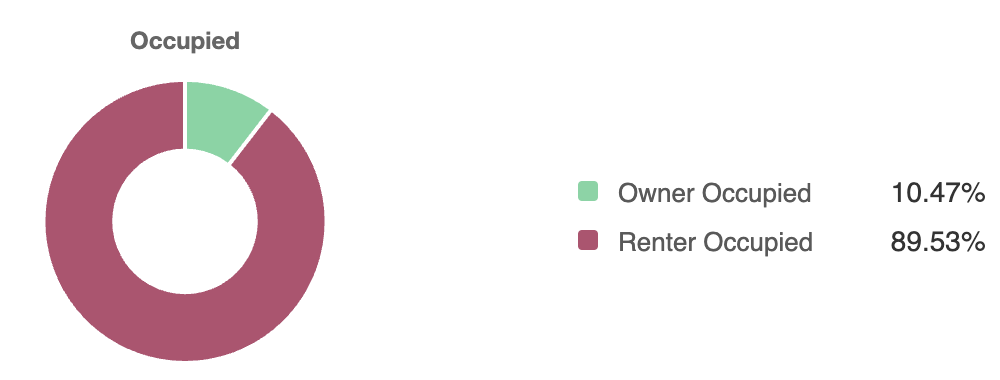 Image and Image Above Courtesy of Point2
Image and Image Above Courtesy of Point2
Let's Talk Money
As of 2021, the median household (or apartmenthold) income for Koreatowners was approxiamtely $47,000. This puts the neighborhood in the 35th percentile of all Californian neighborhoods.
76%
of Koreatown residents qualify as "low income" or below
72%
of the population lives below the 100 percent poverty threshold.
What counts as low income?
Low income households earn 51-80% of the median house income. Very low income households make 31-50%, and extremely low income is anything 30% and under.
What is the 100% Poverty Threshold?
This is a federal guideline that differs by state. In California, the 100% Poverty Threshold is earnings of about $13,600 annually per one person.
Health & Environment
In 2020, less than 10% of Koreatowners reported having "poor physical health"- a slightly lower percentage than its surrouding neighborhoods. Additionally, the population has slighty lower than average rates of heart disease (4%), an average life expectancy (80 years), and average rates of cancer (3%).
Koreatown has an average Air Quality Index (AQI) of 79, which is described as "moderate" by airnow.gov
A 2014 report created by UC Santa Cruz student Emely Lopez, in partnership with the Koreatown Youth and Community Center, reported limited park space (less than 3 square feet per person), limited tree canopy cover (7.9%), and limited access to fresh fruits and vegetables. In fact, over half of Koreatown residents do their grocery shopping outside of Koreatown.
More recent statistics appear to coincide with Lopez's report. About 54% of all Koreatown children are obese. However, this trend is not confined to just Koreatown, as it seems to affect all neighboring communities.
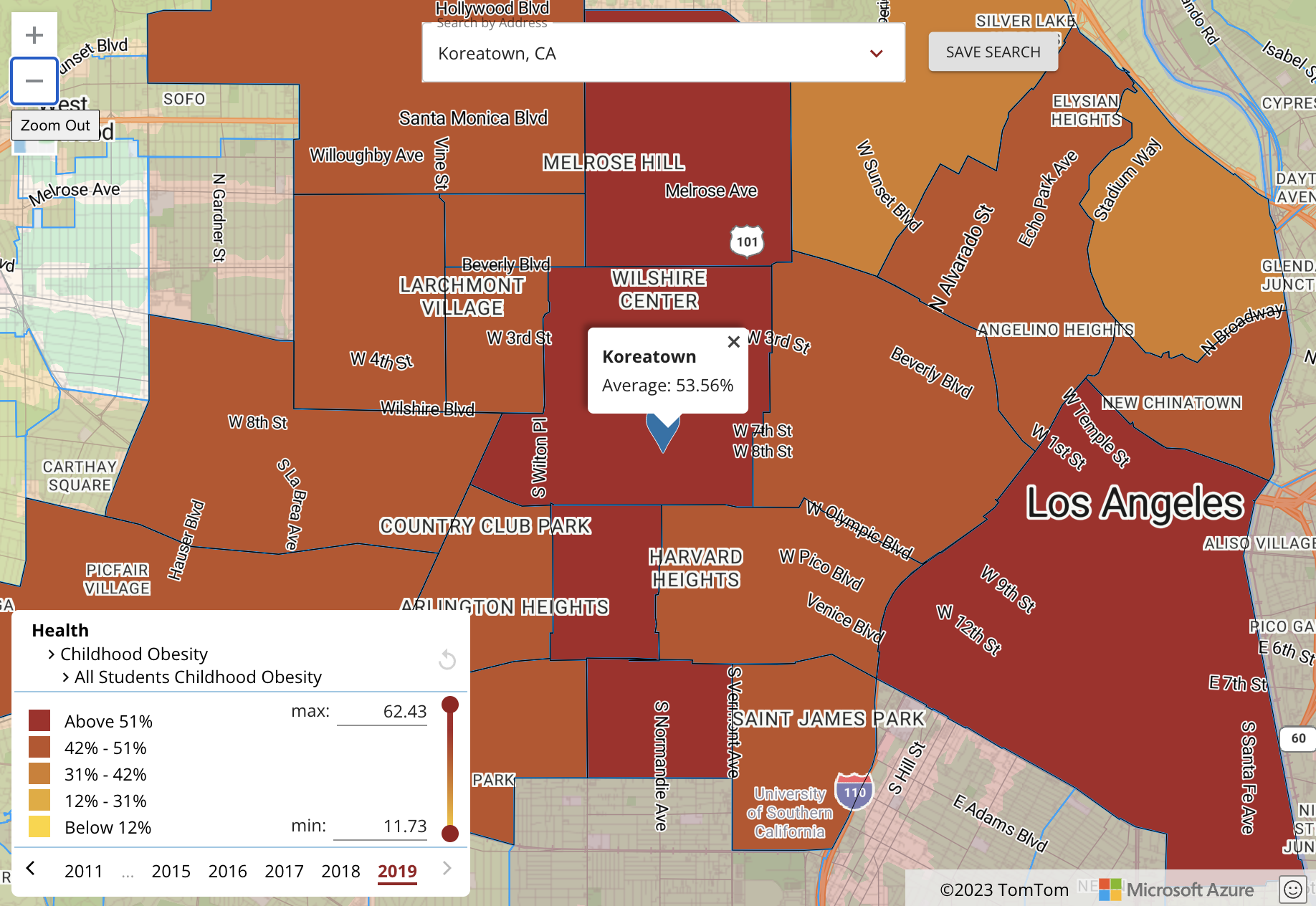 Image Courtesy of NDSC
Image Courtesy of NDSC

